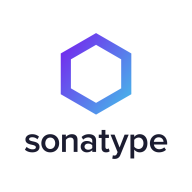

Sonatype Repository Firewall and Sonatype Lifecycle compete in the software development optimization category. Sonatype Lifecycle emerges as the stronger option due to its comprehensive features and higher user-perceived value.
Features: Sonatype Repository Firewall focuses on preemptively blocking unwanted components, enhances security, and has effective risk management. Sonatype Lifecycle provides advanced vulnerability detection, broad insights, and comprehensive functionality valued in feature-rich settings.
Room for Improvement: Sonatype Repository Firewall could improve integration capabilities, expand compatibility, and enhance user interface design. Sonatype Lifecycle needs better usability, reporting mechanisms, and an intuitive user experience.
Ease of Deployment and Customer Service: Sonatype Repository Firewall is straightforward to deploy but receives varying feedback on support responsiveness. Sonatype Lifecycle, with more complex deployment, benefits from a more reliable support team.
Pricing and ROI: Sonatype Repository Firewall has an attractive setup cost appealing to budget-conscious users. Sonatype Lifecycle, despite higher pricing, is seen to offer enhanced ROI due to its comprehensive capabilities.


Sonatype Lifecycle is an open-source security and dependency management software that uses only one tool to automatically find open-source vulnerabilities at every stage of the System Development Life Cycle (SDLC). Users can now minimize security vulnerabilities, permitting organizations to enhance development workflow. Sonatype Lifecycle gives the user complete control over their software supply chain, allowing them to regain wasted time fighting risks in the SDLC. In addition, this software unifies the ability to define rules, actions, and policies that work best for your organizations and teams.
Sonatype Lifecycle allows users to help their teams discover threats before an attack has the chance to take place by examining a database of known vulnerabilities. With continuous monitoring at every stage of the development life cycle, Sonatype Lifecycle enables teams to build secure software. The solution allows users to utilize a complete automated solution within their existing workflows. Once a potential threat is identified, the solution’s policies will automatically rectify it.
Benefits of Open-source Security Monitoring
As cybersecurity attacks are on the rise, organizations are at constant risk for data breaches. Managing your software supply chain gets trickier as your organization grows, leaving many vulnerabilities exposed. With easily accessible source code that can be modified and shared freely, open-source monitoring gives users complete transparency. A community of professionals can inspect open-source code to ensure fewer bugs, and any open-source dependency vulnerability will be detected and fixed rapidly. Users can use open-source security monitoring to avoid attacks through automatic detection of potential threats and rectification immediately and automatically.
Reviews from Real Users
Sonatype Lifecycle software receives high praise from users for many reasons. Among them are the abilities to identify and rectify vulnerabilities at every stage of the SDLC, help with open-source governance, and minimize risk.
Michael E., senior enterprise architect at MIB Group, says "Some of the more profound features include the REST APIs. We tend to make use of those a lot. They also have a plugin for our CI/CD.”
R.S., senior architect at a insurance company, notes “Specifically features that have been good include:
• the email notifications
• the API, which has been good to work with for reporting, because we have some downstream reporting requirements
• that it's been really user-friendly to work with.”
"Its engine itself is most valuable in terms of the way it calculates and decides whether a security vulnerability exists or not. That's the most important thing. Its security is also pretty good, and its listing about the severities is also good," says Subham S., engineering tools and platform manager at BT - British Telecom.
Sonatype Repository Firewall is a cloud-based security solution designed to safeguard your software supply chain against malicious components. It operates by meticulously scanning and evaluating each new component against customized governance policies, thereby effectively identifying and blocking potential threats before they infiltrate your development pipeline. What sets Sonatype Repository Firewall apart is its user-friendly setup, seamless integration with existing workflows, and remarkable scalability, making it suitable for software development environments of any size. Key features include blocking malicious components through behavioral analysis, malware scanning, and vulnerability assessment, as well as the ability to enforce custom governance policies. By utilizing this tool, organizations can enhance their software supply chain security, mitigate risks related to supply chain attacks, bolster compliance with industry standards, and ultimately reduce costs associated with security incidents.
We monitor all Application Security Tools reviews to prevent fraudulent reviews and keep review quality high. We do not post reviews by company employees or direct competitors. We validate each review for authenticity via cross-reference with LinkedIn, and personal follow-up with the reviewer when necessary.